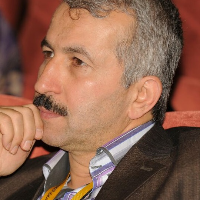Effects of using hallux valgus (HV) splint, HV splint plus exercise or HV splint plus electrical stimulation (ES) on treatment of flexible HV in Young Population
Author(s):
Abstract:
Background And Aim
The dramatically increased incidence of hallux valgus (HV) deformity is more related to the cultural rather than genetic parameters. Satisfaction rate following either conservative or surgical treatments are very low. The current study aimed to compare the effects of three commonly used conservative treatments including hallux valgus (HV) splint, HV splint plus electrical stimulation (ES) currents, or HV splint plus exercise to treat this deformity. Materials and Methods
Thirty-six university students with a mild to moderate HV deformity were recruited in this study. Before starting the study, anterior-posterior view radiographies were taken from their feet. HV angle (HVA) less than 20º was considered as normal, between 21-25º as mild, between 26-40 º as moderate and higher than 40 degrees was considered as a sever HV deformity. Then, the subjects were divided into three groups (n=12) and were randomly placed into Splint, Splint plus Exercise, and Splint plus Exercise plus ES groups for 6 weeks. At the end of week six, the radiographies were repeated and the pre/post treatments HVA were compared. Results
The results of the current study showed a non-significant 4.7% reduction of HVA in Splint group (p=0.12). However, 15.4% reduction of HVA occurred in Splint plus Exercise group, which was significant (p=0.005).The subjects used Splint plus Electrical stimulation showed a significant 13.9% reduction in HVA (p=0.008). Furthermore, AOFAS scores of the subjects revealed no significant differences among treatment groups in terms of pain reduction.Conclusion
Although using a HV splint alone could not significantly reduce the HVA, mixing it with either exercise or ES could significantly expedite its corrective effects. It should be mentioned that correction of the deformity was not always associated with decreasing the subjects’ pain, which might be due to the immediate counter force of the splint. Repeating the study with a long follow-up time is recommended.Language:
Persian
Published:
Scientific Journal of Rehabilitation Medicine, Volume:1 Issue: 3, 2012
Page:
41
magiran.com/p1123910
دانلود و مطالعه متن این مقاله با یکی از روشهای زیر امکان پذیر است:
اشتراک شخصی
با عضویت و پرداخت آنلاین حق اشتراک یکساله به مبلغ 1,390,000ريال میتوانید 70 عنوان مطلب دانلود کنید!
اشتراک سازمانی
به کتابخانه دانشگاه یا محل کار خود پیشنهاد کنید تا اشتراک سازمانی این پایگاه را برای دسترسی نامحدود همه کاربران به متن مطالب تهیه نمایند!
توجه!
- حق عضویت دریافتی صرف حمایت از نشریات عضو و نگهداری، تکمیل و توسعه مگیران میشود.
- پرداخت حق اشتراک و دانلود مقالات اجازه بازنشر آن در سایر رسانههای چاپی و دیجیتال را به کاربر نمیدهد.
In order to view content subscription is required
Personal subscription
Subscribe magiran.com for 70 € euros via PayPal and download 70 articles during a year.
Organization subscription
Please contact us to subscribe your university or library for unlimited access!



